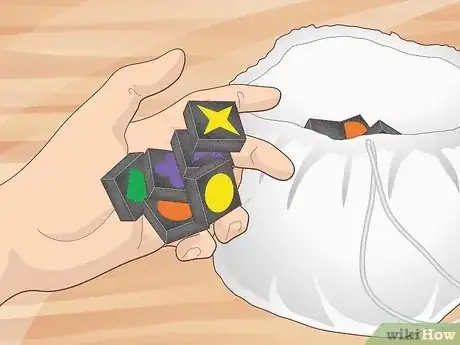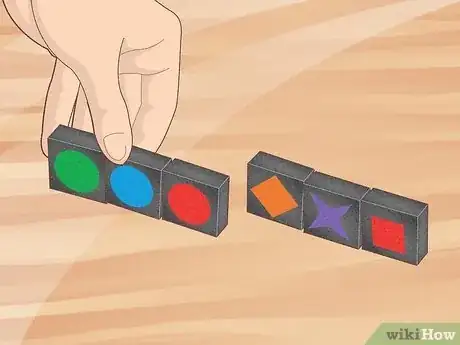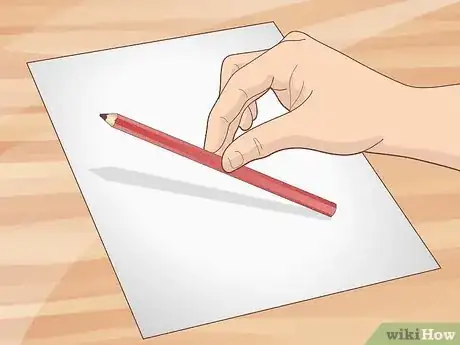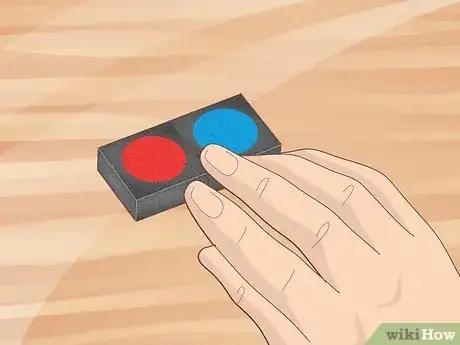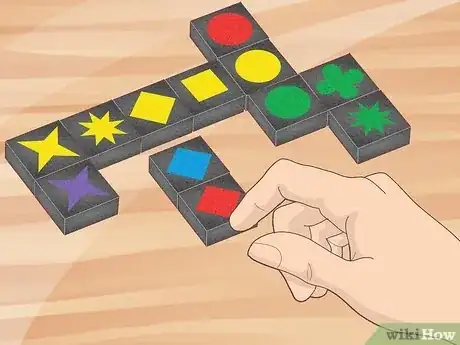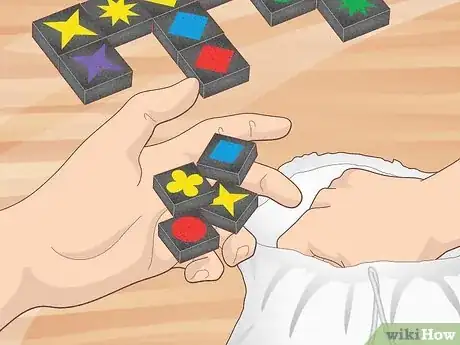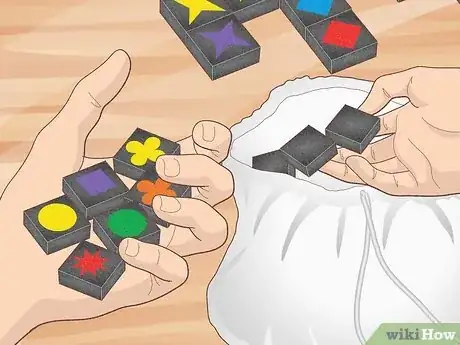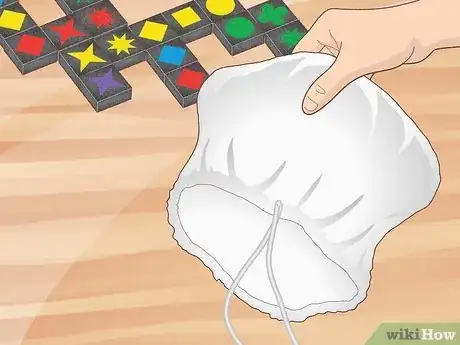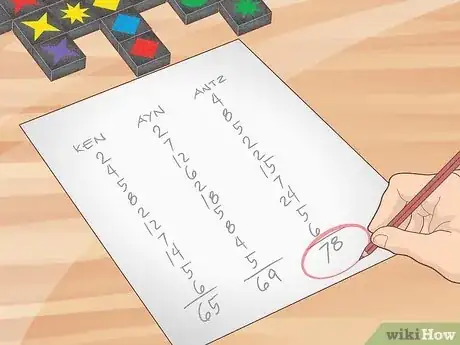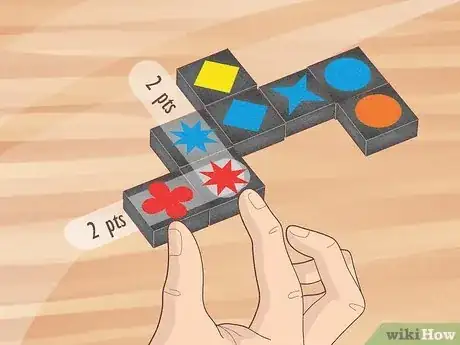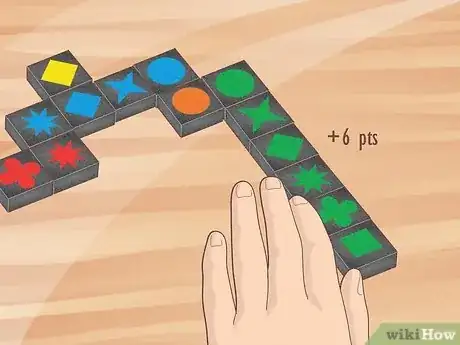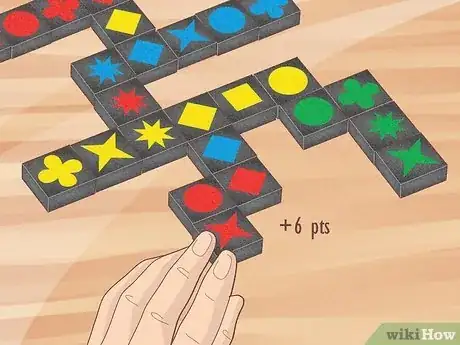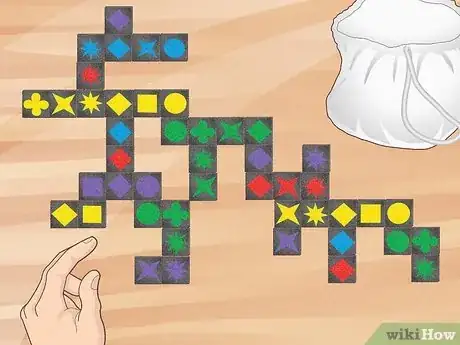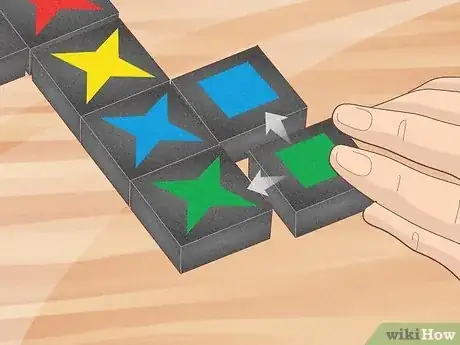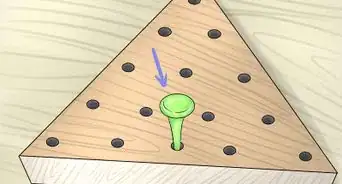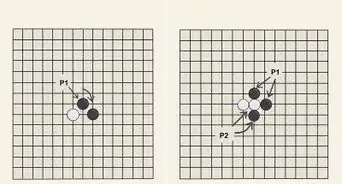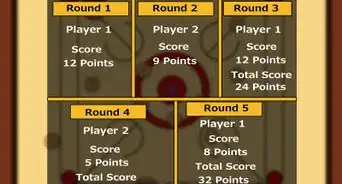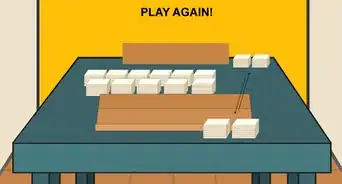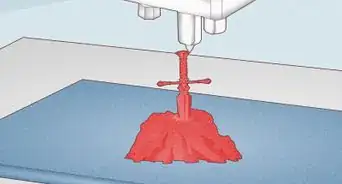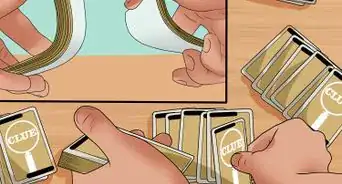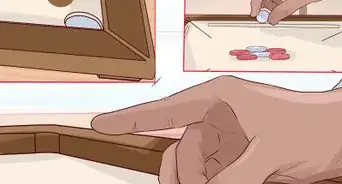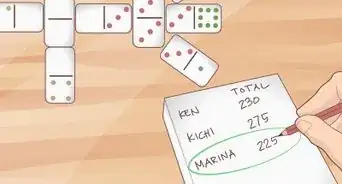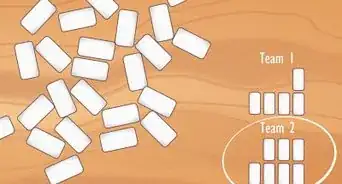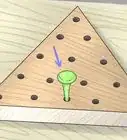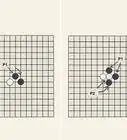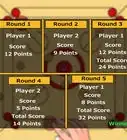This article was co-authored by wikiHow staff writer, Hunter Rising. Hunter Rising is a wikiHow Staff Writer based in Los Angeles. He has more than three years of experience writing for and working with wikiHow. Hunter holds a BFA in Entertainment Design from the University of Wisconsin - Stout and a Minor in English Writing.
This article has been viewed 43,960 times.
Learn more...
Are you looking for a board game that's easy enough to teach kids, but has a lot of strategy for adults? Qwirkle is a game you can play with 2–4 people who are 6 or older. In Qwirkle, you'll take turns laying tiles down on the table and try to make lines of colors or shapes to earn the most points. You're probably pretty excited to bring Qwirkle to the table, so keep reading for all the rules you'll need to know to start playing!
Steps
Setup
-
1Draw 6 tiles into your hand from the bag. If it’s your first time playing, toss all of the tiles into the drawstring bag and shake it up to give them a good mix. All players pull 6 tiles out of the bag for your starting hand, but keep them hidden from other players so they can’t see what you have. Every tile will have a colored shape on it.[1]
- There are 6 different colors and 6 different shapes, so Qwirkle has 36 different tiles. There are 3 copies of each tile for a total of 108 tiles.
-
2Determine the first player. Look at your hand of tiles and count how many tiles share one characteristic, either a single color or a single shape. Tell the other players how many tiles are in your largest group, and whoever says the biggest number takes the first turn.[2]
- Example: If your hand has a red square, red circle, blue circle, green circle, orange diamond, and purple star, your largest group would be the 3 circles.
- If there’s a tie for who has the largest group, then whoever’s older goes first.
Advertisement -
3Grab a piece of paper and pencil to keep score. Your copy of the game may have come with a scorepad, but if not, just use a blank piece of paper to track your scores.[3]
Gameplay
-
1Play 1 or more tiles to start the grid. If you’re the first player, you get to start building the play area, which is also called the grid. You can choose to play 1 tile, or any number of tiles of a single color or a single shape.[4]
- Two tiles that touch each other form a line and need to be either the same shape or the same color.
- Try to play 2 or more tiles when you’re starting the game since you’ll earn more points.
-
2Add 1 or more tiles to the grid when it’s your turn. You can play 1 tile, or multiple tiles that either share the same color or the same shape. The catch is, the tile you play has to connect to another tile that’s already been played. There are a few restrictions on where you can place the tiles as well. The placement restrictions are:[5]
- A line of the same color can only have one tile in each shape.
Example: You can only have one yellow square in a line. - A line of the same shape can only have one tile of each color.
Example: You can only have one blue star in a line of stars. - When you add the tiles to the grid, they all have to go into the same line. However, you can place your tiles on either end of the line.
- As you build out the grid, you’ll restrict where other players can put their tiles and some spots might get blocked off.
- A line of the same color can only have one tile in each shape.
-
3Draw tiles from the bag until you have 6 in your hand. Whenever you play tiles from your hand, shake up the bag and pull out new ones to add to your hand. If you played multiple tiles on your turn, take as many as you played out of the bag.[6]
-
4Exchange tiles in your hand instead of playing if you want new ones. If you don’t like the tiles in your hand or if you aren’t able to play anything from your hand, set any number of tiles from your hand aside. Draw that many new tiles from the bag and put them in your hand so you have 6 tiles. Then, put the tiles you set aside back in the bag.[7]
- You’ll have to wait until your next turn to play any tiles you just exchanged.
-
5Play until the draw bag is empty and a player places all their tiles. After you finish your turn, the player on your left will take the next turn. When someone takes the last tile out of the bag, you’ll keep taking turns, but you won’t be able to draw new tiles at the end of your turn. When a player puts down their last tile, it triggers the end of the game.[8]
-
6Win the game if you have the highest score at the end of the game. You’ll earn points every time you play a tile into the play area in the middle of the table, also known as the. If you play your tiles strategically, you’ll earn the most points and win![9]
Scoring
-
1Score 1 point for each tile in the same line as the one you played. When you put your tile in the grid, count all of the tiles in the same line including the one you just placed. If the tile you played connected to more than 1 line, be sure to count the tiles in them as well.[10]
- Example: If you add 2 tiles to the end of a line that already has 2 tiles, then you’ll earn 4 points.
- Example: If you play blue square on the end of a line with 2 other squares and then connect a blue circle to the blue square, you’ll earn a total of 5 points. You get 3 points for the line of squares and 2 points for the new blue line you made.
-
2Earn 6 points when you finish a line of 6 tiles. The lines have to be either 6 tiles with the same shape and different colors, or 6 tiles of the same color but different shapes. If you place the last tile in a line, score 1 point for each tile like you normally would, but give yourself an extra 6 points for completing a Qwirkle![11]
- You can never make a line that’s longer than 6 tiles.
-
3Gain an extra 6 points if you play your last tile and end the game. Since you were able to play all your tiles faster than the other players, you get a reward of 6 points that could bump your score up at the end of the game. Plus, you still get to score 1 point for each tile in the line you played.[12]
Strategy Tips
-
1Count the tiles that have already been played. Since there are only 3 copies of each tile, you can get an idea of what’s still available. If you’re hoping to draw a specific tile, check the grid to see if they’ve already all been played.[13]
-
2Play tiles so they add to multiple lines at once. Look around the grid before you place your tiles so you can find spots that intersect with a lot of lines on the board. You’ll earn big points for adding to more than one line in your turn, and it can give you a big advantage.[14]
- Search the board for corners made by the lines and see if you have any matching colors or shapes.
Example: If there’s an empty space with a green star to the left and a blue square above it, you could play a green square in the space for 4 points!
- Search the board for corners made by the lines and see if you have any matching colors or shapes.
-
3Avoid leaving rows or columns with 5 tiles. Another player could easily play the last tile in the line and get 6 bonus points for a Qwirkle. Always try to leave 4 or fewer tiles in a line, and keep your eyes peeled for any possible Qwirkles you could make on your next turn.[15]
References
- ↑ https://cdn.1j1ju.com/medias/fd/7f/11-qwirkle-rulebook.pdf
- ↑ https://www.mindware.orientaltrading.com/pdf/instructions/32016.pdf
- ↑ https://www.mindware.orientaltrading.com/pdf/instructions/32016.pdf
- ↑ https://www.mindware.orientaltrading.com/pdf/instructions/32016.pdf
- ↑ https://www.mindware.orientaltrading.com/pdf/instructions/32016.pdf
- ↑ https://www.mindware.orientaltrading.com/pdf/instructions/32016.pdf
- ↑ https://youtu.be/UVnV00jkYWo?t=34
- ↑ https://cdn.1j1ju.com/medias/fd/7f/11-qwirkle-rulebook.pdf
- ↑ https://youtu.be/8ZAY3HSxnuk?t=272
- ↑ https://cdn.1j1ju.com/medias/fd/7f/11-qwirkle-rulebook.pdf
- ↑ https://youtu.be/8ZAY3HSxnuk?t=202
- ↑ https://www.mindware.orientaltrading.com/pdf/instructions/32016.pdf
- ↑ https://www.mindware.orientaltrading.com/pdf/instructions/32016.pdf
- ↑ https://cdn.1j1ju.com/medias/fd/7f/11-qwirkle-rulebook.pdf
- ↑ https://youtu.be/8ZAY3HSxnuk?t=243
